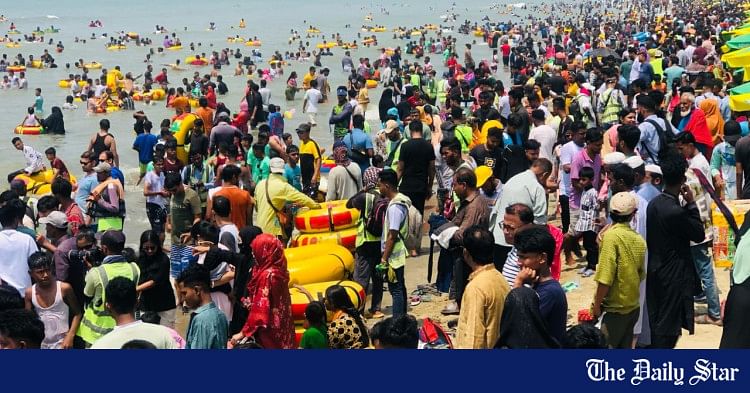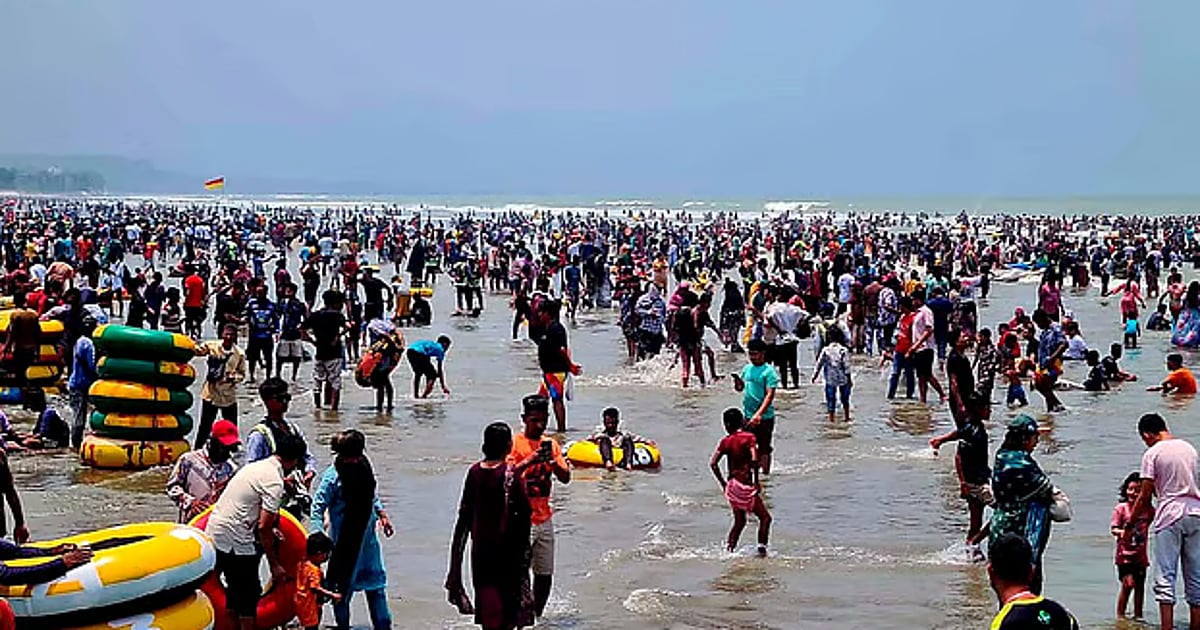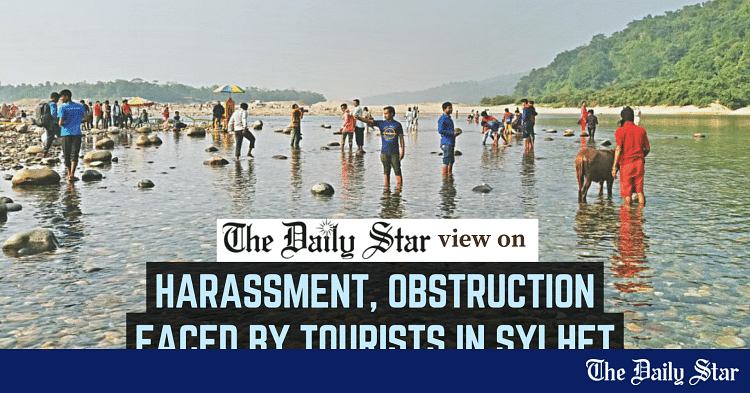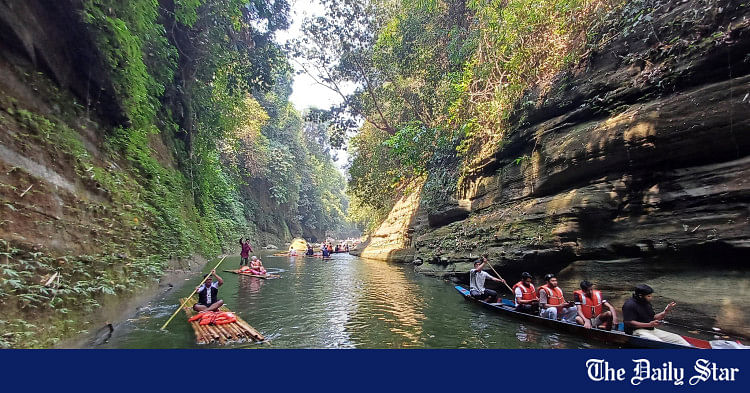Saif
Senior Member
- Joined
- Jan 24, 2024
- Messages
- 15,574
- Reaction score
- 7,889
- Nation

- Axis Group

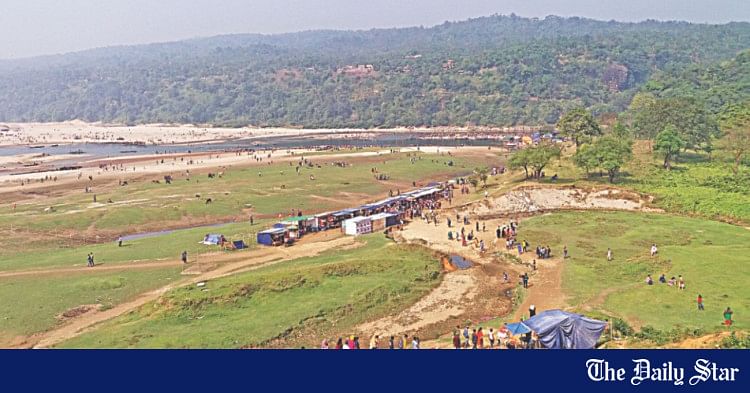
Sylhet gears up for massive tourist influx this Eid
Expects 15-20 lakh tourists, Tk 150cr turnover
Sylhet gears up for massive tourist influx this Eid
Expects 15-20 lakh tourists, Tk 150cr turnover

Sylhet is preparing for a massive influx of tourists during the nine-day extended Eid-ul-Fitr holiday, with around 80 percent of hotel and rest house rooms already booked.
Tourism-related businesses expect at least 15 to 20 lakh visitors, generating a turnover of up to Tk 150 crore.
Despite concerns over recent security incidents on highways and at tourist spots, law enforcement agencies and the administration have taken measures to ensure visitor safety.
Sylhet's top attractions include the shrines of Hazrat Shahjalal (R) and Hazrat Shah Paran (R), tea gardens, Jaflong, Bichanakandi, Sadapathor, Ratargul, Lalakhal, Rangpani, and Pantumai. Many tourists also visit the tea gardens of Sreemangal and Madhabkunda in the Moulvibazar district.
During Eid, two types of tourists typically visit Sylhet -- local visitors from the four districts of Sylhet division, who explore multiple spots in a single day, and travellers from other parts of the country, who stay in hotels and resorts.
Foyez Hasan Ferdous, acting president of the Sylhet Chamber of Commerce and Industry, said Sylhet is the only district where multiple tourist destinations are located close together, allowing visitors to explore several sites in a day.
He noted that natural disasters and political instability had affected tourism in recent years but expressed optimism about this year's turnout.
He said the sector's success benefits various industries and called for government intervention to improve road infrastructure and security.
Sumat Nuri Jewel, former president of the Sylhet Hotel, Motel, and Guesthouse Owners' Association and managing director of Hotel Fortune Garden, said the response from tourists has been overwhelming, with almost all rooms booked in advance.
Mohammad Bashir Uddin, additional superintendent of police of the Tourist Police in Sylhet Region, said security measures have been strengthened across six zones, with Jaflong, Sreemangal, and Madhabkunda expected to receive the highest number of visitors.
He said coordination with district and local police has been ensured to provide a secure environment.
Md Anwar-Uz-Zaman, additional deputy commissioner (general) of Sylhet, said Upazila Nirbahi Officers in areas with tourist attractions have been instructed to take necessary precautions.
Relevant engineering departments have been directed to address minor road defects, while a control room with a hotline has been set up under the district administration to assist tourists.
He expressed confidence that visitors would enjoy a safe and uninterrupted holiday in Sylhet this year.
Expects 15-20 lakh tourists, Tk 150cr turnover
Sylhet is preparing for a massive influx of tourists during the nine-day extended Eid-ul-Fitr holiday, with around 80 percent of hotel and rest house rooms already booked.
Tourism-related businesses expect at least 15 to 20 lakh visitors, generating a turnover of up to Tk 150 crore.
Despite concerns over recent security incidents on highways and at tourist spots, law enforcement agencies and the administration have taken measures to ensure visitor safety.
Sylhet's top attractions include the shrines of Hazrat Shahjalal (R) and Hazrat Shah Paran (R), tea gardens, Jaflong, Bichanakandi, Sadapathor, Ratargul, Lalakhal, Rangpani, and Pantumai. Many tourists also visit the tea gardens of Sreemangal and Madhabkunda in the Moulvibazar district.
During Eid, two types of tourists typically visit Sylhet -- local visitors from the four districts of Sylhet division, who explore multiple spots in a single day, and travellers from other parts of the country, who stay in hotels and resorts.
Foyez Hasan Ferdous, acting president of the Sylhet Chamber of Commerce and Industry, said Sylhet is the only district where multiple tourist destinations are located close together, allowing visitors to explore several sites in a day.
He noted that natural disasters and political instability had affected tourism in recent years but expressed optimism about this year's turnout.
He said the sector's success benefits various industries and called for government intervention to improve road infrastructure and security.
Sumat Nuri Jewel, former president of the Sylhet Hotel, Motel, and Guesthouse Owners' Association and managing director of Hotel Fortune Garden, said the response from tourists has been overwhelming, with almost all rooms booked in advance.
Mohammad Bashir Uddin, additional superintendent of police of the Tourist Police in Sylhet Region, said security measures have been strengthened across six zones, with Jaflong, Sreemangal, and Madhabkunda expected to receive the highest number of visitors.
He said coordination with district and local police has been ensured to provide a secure environment.
Md Anwar-Uz-Zaman, additional deputy commissioner (general) of Sylhet, said Upazila Nirbahi Officers in areas with tourist attractions have been instructed to take necessary precautions.
Relevant engineering departments have been directed to address minor road defects, while a control room with a hotline has been set up under the district administration to assist tourists.
He expressed confidence that visitors would enjoy a safe and uninterrupted holiday in Sylhet this year.



